
Trochilinae is one of the six subfamilies that make up the hummingbird family Trochilidae.

The blue-chested hummingbird is a species of hummingbird in the family Trochilidae. It is found in Colombia, Costa Rica, Ecuador, Nicaragua, and Panama. Its natural habitats are subtropical or tropical moist lowland forest and heavily degraded former forest.

Amazilia is a hummingbird genus in the subfamily Trochilinae. It is found in tropical Central and South America.

The charming hummingbird and also known as the beryl-crowned hummingbird is a species of hummingbird in the family Trochilidae, found in Costa Rica and Panama. Its natural habitats are subtropical or tropical moist lowland forest and heavily degraded former forest. Staying within the exterior of forests, it searches for scattered flowers and various arthropods for food.
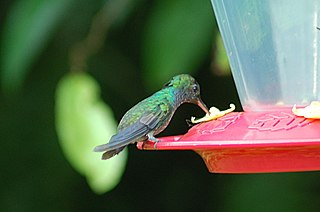
The purple-chested hummingbird is a species of hummingbird in the family Trochilidae. It is found in Colombia and Ecuador. Its natural habitats are subtropical or tropical moist lowland forest and heavily degraded former forest. It is commonly hunted for the supposed medicinal properties of its beak by indigenous peoples in the area.
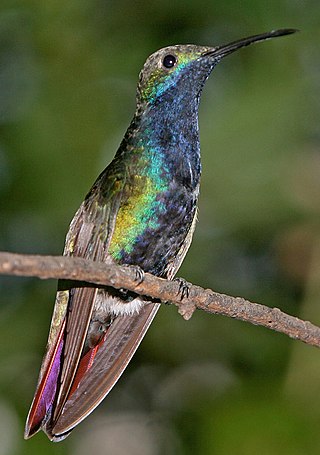
The mangos, Anthracothorax, are a genus of hummingbirds in the subfamily Trochilinae native to the Neotropics.

Chlorestes is a genus of hummingbirds.

The white-chinned sapphire is a species of hummingbird in the family Trochilidae. It is found in northern South America. Its natural habitats are subtropical or tropical moist lowland forest, subtropical or tropical dry shrubland, and heavily degraded former forest.

Polyerata is a genus of hummingbirds.
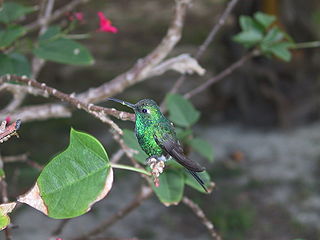
Riccordia is a genus of birds in the hummingbird family Trochilidae. They are endemic to the Caribbean.
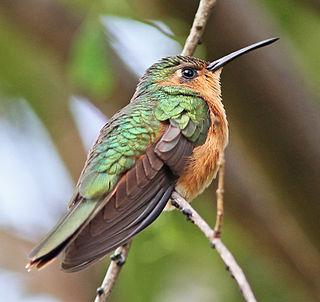
Pampa is a genus of birds in the hummingbird family Trochilidae. These species are resident in northern Middle America.

Thaumasius is a genus in the family of Hummingbirds, and consists of 2 species.

Elliotomyia is a genus in the family of Hummingbirds.
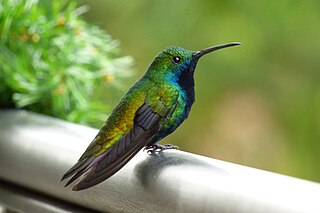
Polytminae is one of the six subfamilies of the hummingbird family Trochilidae. The subfamily contains 12 genera with a total of 29 species.
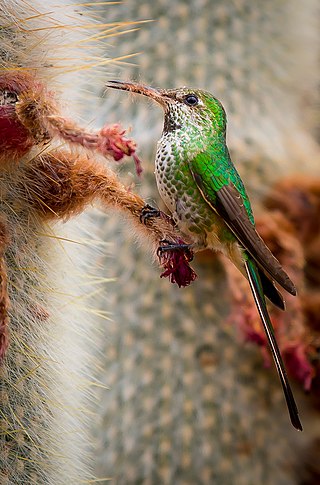
Lesbiinae is one of the six subfamilies that make up the hummingbird family Trochilidae.
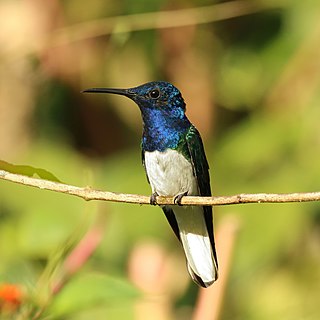
Florisuginae is one of the six subfamilies in the hummingbird family Trochilidae.

Heliantheini is one of the two tribes that make up the subfamily Lesbiinae of the hummingbird family Trochilidae. The other tribe in the subfamily is Lesbiini.
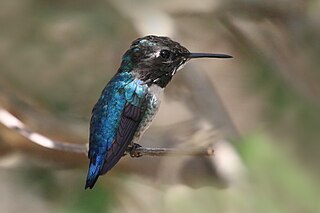
Mellisugini is one of the three tribes that make up the subfamily Trochilinae in the hummingbird family Trochilidae. The other two tribes in the subfamily are Lampornithini and Trochilini (emeralds).

Lampornithini is one of the three tribes that make up the subfamily Trochilinae in the hummingbird family Trochilidae. The other two tribes in the subfamily are Mellisugini (bees) and Trochilini (emeralds).

Trochilini is one of the three tribes that make up the subfamily Trochilinae in the hummingbird family Trochilidae. The other two tribes in the subfamily are Lampornithini and Mellisugini (bees).





































